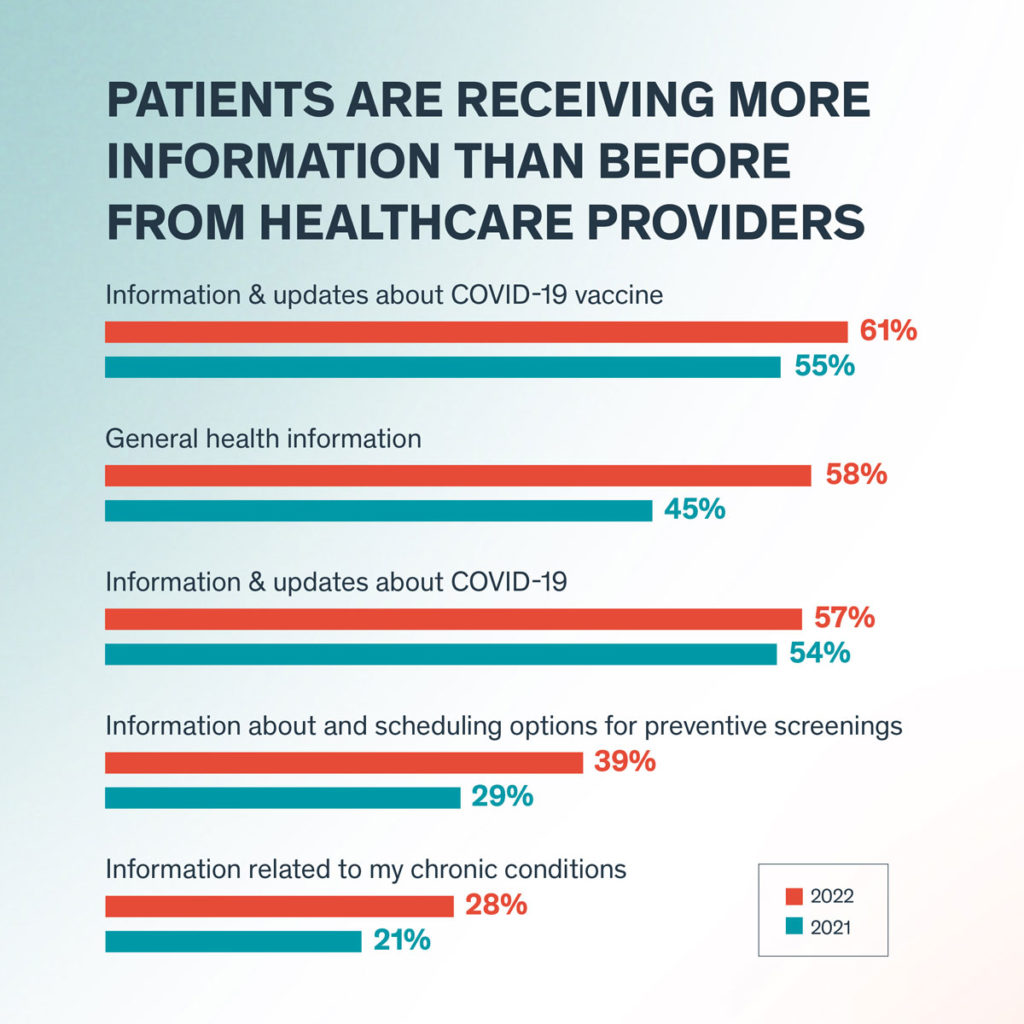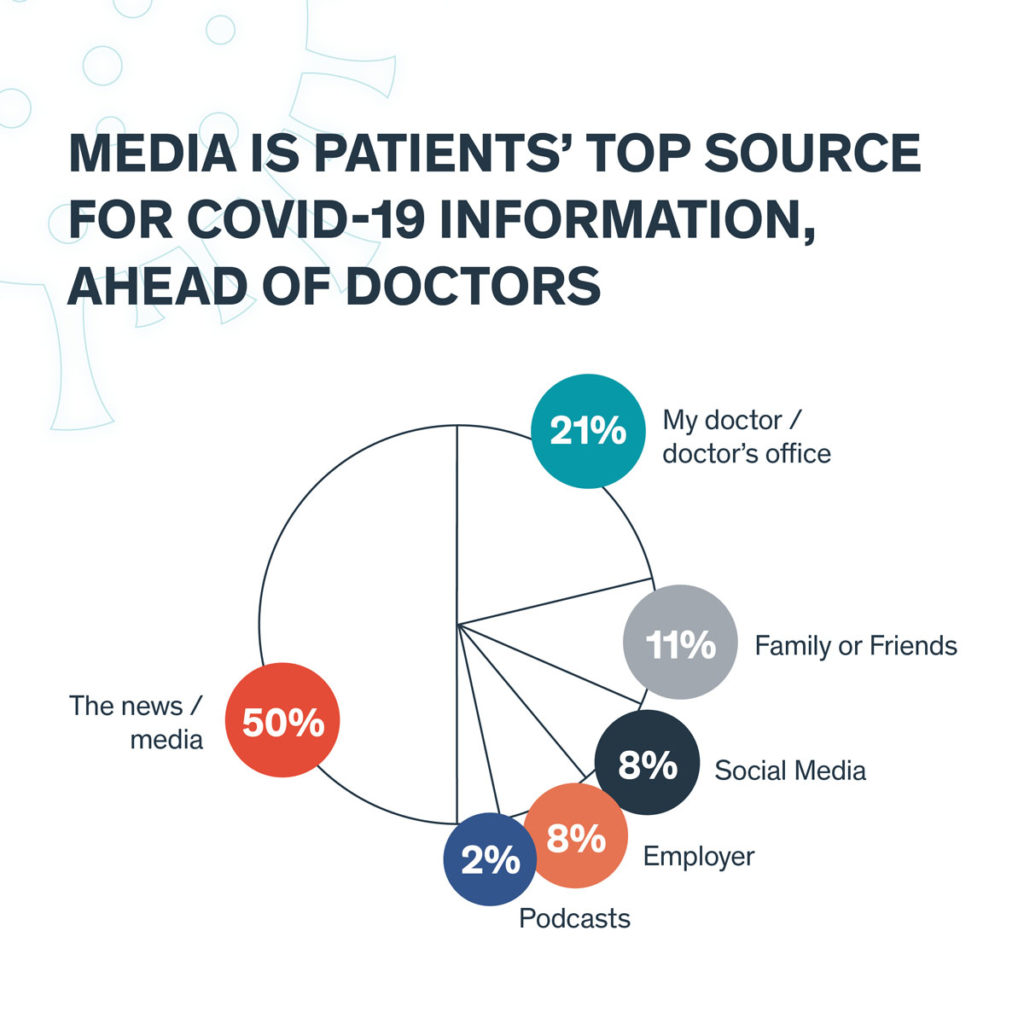In 2021, we conducted research to quantify the impact COVID-19 had on patient engagement and expectations for their doctors. What we found was quite surprising: 50% of respondents reported having higher expectations for their doctors; 23% said their opinion of their doctor had changed and nearly 1 in 5 were considering changing doctors based on how theirs handled COVID-19.
With 2021 in the rearview, we wanted to check back to see how doctors are doing, and whether they are meeting patient expectations. While there are still large gaps that exist between expectations and reality, the data reveal some significant improvements.
Across the board, providers are sending more information to their patients.

We celebrate those improvements, as they signal that more patients are getting information about their health and healthcare from their providers.
When people do not get relevant and timely information related to their health from their providers, they turn to other sources, which can be problematic in today’s disinformation-heavy world.

Whether consumers are hearing from their doctors right now or not, there is no doubt they want to. We found that 62% want to hear from their doctors more in 2022. And, as people look for new doctors – 15% are considering changing their provider in 2022 – more than half (53%) will look for one that uses digital tools to proactively communicate about health management.
The takeaway in 2022: to meet changing consumer expectations, achieve loyalty and drive improved health outcomes, providers need to think beyond patient engagement, to patient activation: How can they encourage patients to take action as a result of their engagement efforts?
To access the full survey findings and research report, download the State of Patient Engagement in 2022.


